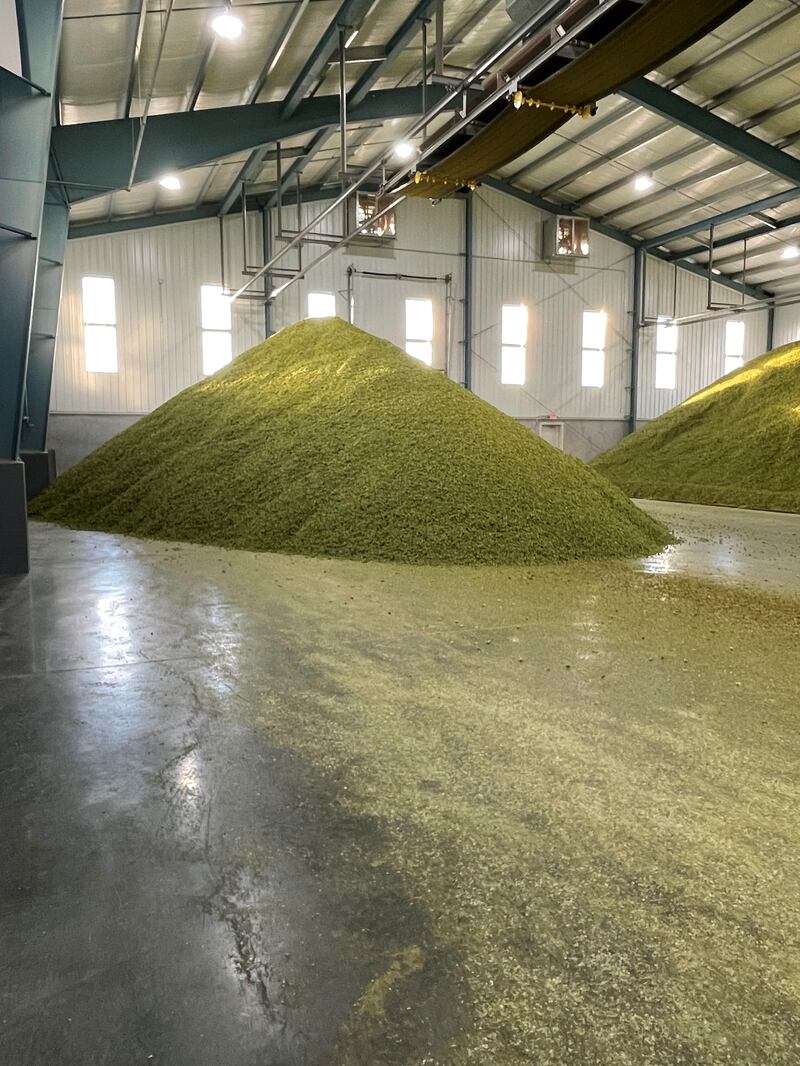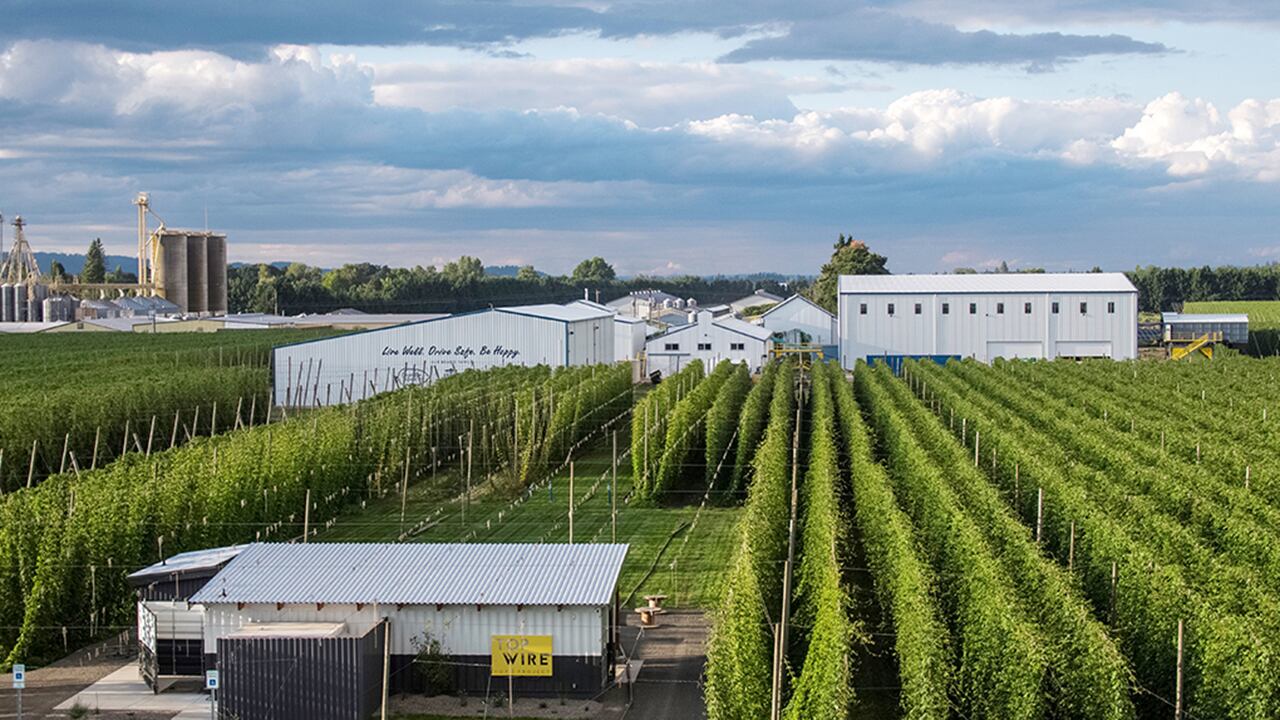It’s officially the time of year that both brewers and drinkers look forward to: fresh hop season.
Some local breweries, like Southeast Portland’s Ruse, have already begun documenting their trips to the region’s many farms on social media—images that reveal the emerald curtains of bines are now 15 to 20 feet high. Precious green cones will then be taken back to brewhouses across the state by those who make the special field trip.
However, as harvest gets underway at many farms this week, fresh hop season is starting with a cloud hanging over it. Today, the Oregon Beverage Alliance announced that fewer acres were planted in the state overall, in part due to slumping beer sales.
It’s a decline that has been documented nationwide, not just here in Oregon. According to the U.S. Department of Agriculture, hop acreage has decreased by 8% nationwide over the past year. In Oregon, the numbers are a bit worse: Our farmers saw an 11% decline in the crop.
“As the beer industry goes, so does the hop industry,” Ben Edmunds, owner of Breakside Brewery and president of the Oregon Brewers Guild, stated in a press release.

Oregon is currently the third-largest hop grower in the country, with nearly 7,000 acres. Washington and Idaho claim the No. 1 and 2 spots, respectively. It wasn’t too long ago, however, that Oregon was just behind our neighbor to the north. But Idaho surpassed us in 2018, according to the Hop Growers of America.
There are a variety of reasons fewer acres of hops are being planted. However, shifting consumer taste can’t be ignored. Industry trade group the Brewers Association states that overall beer volume sales were down 3% last year, though craft brewer volume sales remained about the same as they were in 2021. While those numbers aren’t dire, it certainly comes as a blow to an industry that saw stratospheric growth for years. All of that, of course, is felt not just by the breweries, but also the farmers who cultivate grain for malt as well as hops.
“This is the first year of me and my husband running the farm, and it’s been tough,” fourth-generation hop farmer Erica Lorentz of Sodbuster Farms added in a statement. “Sometimes it’s simply a variety of hop going out of style, but this year all hops are down because of declining beer sales. At Sodbuster, we’ll harvest 15% less than last year.”
Of course, drinkers will still have plenty to toast to once those fresh hop beers are tapped in the coming weeks. There should be no shortage of the beverage in the Portland metro area, since making a beer with aromatic green cones directly from the farm is a beloved tradition for many breweries. In fact, some, like McMenamins, have turned the phenomenon into a holiday of sorts: Running of the Brewers sees a pack of the brand’s managers heading to a Willamette Valley farm for bags of hops that can weigh up to 50 pounds, which are then immediately delivered to their breweries all across the state.

